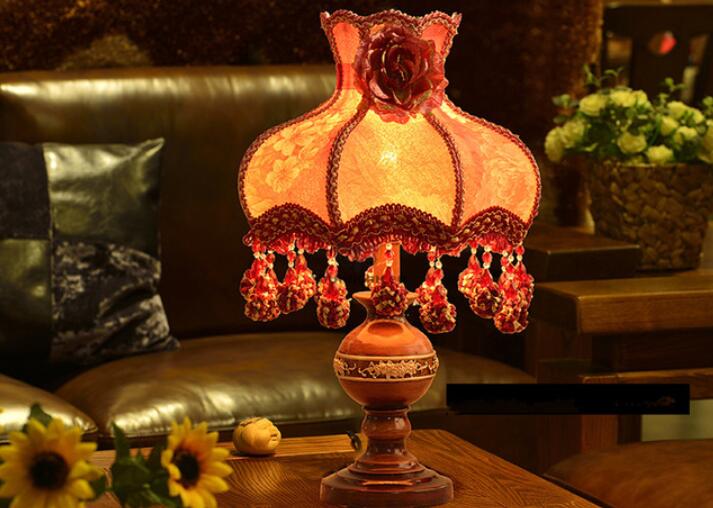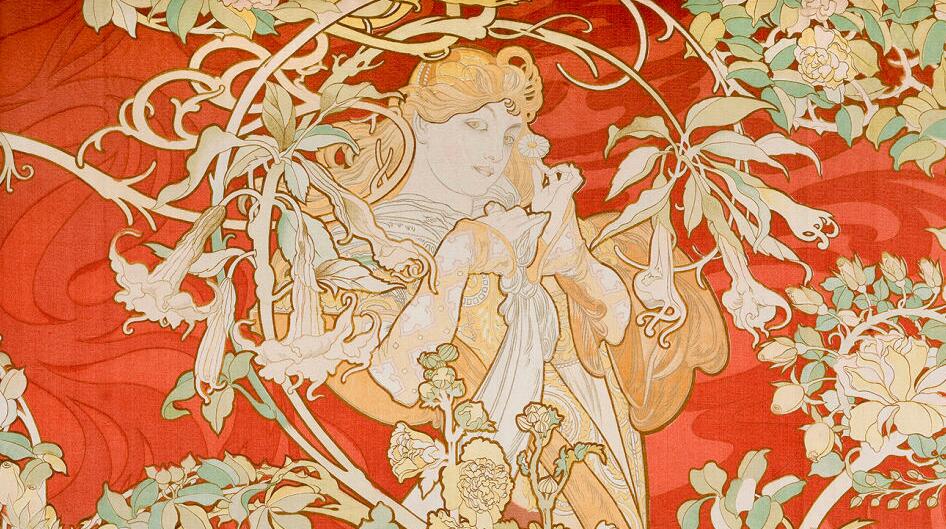Art Nouveau is a captivating art movement that emerged in Europe at the end of the 19th century. It is known for its use of organic and curvaceous lines in design, architecture, and decorative arts. One of the most intriguing aspects of Art Nouveau is how it blends the natural and the geometric, creating a unique visual aesthetic that continues to captivate people today. Art Nouveau lamps are particularly fascinating, not only for their beauty but also for what they represent.
In this article, we will take a journey back in time to explore the world of Art Nouveau lamps. We will examine the social, cultural, and technological context in which they were created. We will also examine their symbolism, their legacy, and how they continue to inspire contemporary designers. By exploring these aspects of Art Nouveau lamps, we hope to gain a deeper appreciation for these elegant and timeless pieces of art.
Contextualizing Art Nouveau Lamps
Art Nouveau emerged at a time of great change and innovation across western Europe in the late 19th century. The Industrial Revolution had brought rapid advancements in technology and manufacturing processes, which allowed for a new generation of artists, architects, and designers to create works that were unprecedented in their form and function.
The Industrial Revolution and Its Impact on Art
The Industrial Revolution produced a wave of new materials, techniques, and production methods, which artists eagerly adopted. This allowed for a new level of creativity and experimentation, leading to the birth of Art Nouveau. Artists who were previously limited to traditional materials like wood, stone, and metal, now had access to new materials such as cast iron, pressed glass, and ceramics. The result was a new wave of works that were both elegant and economical.
The Changing Social and Political Climate in Europe
The Art Nouveau movement emerged at a complex time in European history. The late 19th century saw rapid changes in the political and social landscape across the continent. The rise of industrialization led to an increase in urbanization, and many people relocated to cities in search of work. This new urban class was fascinated by Art Nouveau design, which had a romantic and dreamlike quality that offered an escape from the harsh realities of urban life.
The symbolism of Art Nouveau also reflected the changing attitudes of the time. Many people were disillusioned with traditional forms of religion and morality, and instead embraced new ideas of secularism and individualism. The organic forms and flowing lines of Art Nouveau were seen as a reflection of this new sense of freedom.
The Role of Technology in Art Nouveau
Technology played a vital role in the evolution of Art Nouveau lamps. The movement was fueled by a desire to break free from the constraints of the past, and the combination of new materials and manufacturing techniques produced works that were both innovative and aesthetically pleasing. For example, the invention of the incandescent light bulb in 1879 enabled designers to create lamps with a new level of functionality and striking visual appeal.
Art Nouveau lamps represented a new form of integration of functionality and beauty, reflecting the changes of society beyond the art world as well. These lamps were created not solely to be admired but to provide a needed function in the home, such as lighting a room. The elegant design and artistic flair of Art Nouveau lamps were equally matched with their function, making them highly sought-after pieces for both their aesthetic and practical merits.
The Role of Women in Art Nouveau
Art Nouveau is often described as a “feminine” art movement, and this is reflected in the designs of its lamps. Women played an important role in the movement, both as artists and inspirations.
The Empowerment of Women in Art Nouveau
Art Nouveau was an art form that celebrated the beauty of women and challenged traditional gender roles. Women were given new roles in society as a result of the social and economic changes brought about by the Industrial Revolution, which allowed them to take on different roles than before. This newfound freedom is reflected in the artwork of the time, with many of the lamps featuring delicate forms, intricate floral patterns, and soft colors that would come to characterize the Art Nouveau movement.
The Representation of Women in Art Nouveau Lamps
Art Nouveau lamps often featured female forms, both in the materials used and the designs themselves. A popular style was to feature a female figure with flowing hair, often in soft pastel colors, which became a distinctive element of Art Nouveau lamps. These women were symbolic of the new independent woman who could now have more power in social, economic, and artistic spheres.
The Social Context of Art Nouveau Lamps and Women
Art Nouveau lamps were sold primarily as decorative items for the home, and as such were marketed towards women. However, this isn’t to say that men couldn’t appreciate or possess Art Nouveau lamps, but it was certainly aimed at the female market. Women who were starting to carve out a new role in society were eager to have items they could showcase in their homes that represented their newfound sense of liberation and tastefulness.
The Symbolism Behind Art Nouveau Lamps
Art Nouveau lamps are often referred to as “dreamlike” and “symbolic,” which is why they continue to be studied and appreciated to this day. The elaborate designs on the lamps often have multiple layers of symbolism, including nature, the female form, and other elements.
Nature Symbols in Art Nouveau Lamps
Nature played a significant role in the Art Nouveau movement, and this is reflected in the symbolism of the lamps. Flowers, leaves, and vines were common motifs in Art Nouveau, and they are often used in lamp designs. These symbols were used to represent the organic and free-flowing nature of the movement, which the lamps sought to embody. For example, a lamp might feature a design with entwining vines and flowers that seem to grow and climb up the lamp, evoking a sense of nature and growth.
The Female Form in Art Nouveau Lamps
As discussed, women were a central part of the Art Nouveau movement, and their forms are often represented in the lamps. A popular design feature was to use the female form in the construction of the lamps, with curves and undulating lines that reflect the female body. This style was reflective of the feminist movements of the time, and the growing interest in women’s rights. The female form in Art Nouveau lamps is often stylized and decorative, with flowing curves and lines that emphasize beauty and grace.
Other Symbols and Motifs in Art Nouveau Lamps
There are numerous other symbols and motifs that are commonly used in Art Nouveau lamps. For example, shapes like circles, spirals, and crescents were used to represent the mystical and dreamlike quality that was a hallmark of the movement. Animals were also frequent features, such as the dragonfly or the peacock – both of which symbolized freedom and beauty. Art Nouveau lamps were also characterized by the use of complex designs that incorporated multiple layers of meaning and symbolism, which has made them fascinating for collectors and art historians alike.
The Legacy of Art Nouveau Lamps
The Art Nouveau movement had a profound impact on visual arts, and its influence can be seen in modern design and architecture. Art Nouveau lamps, in particular, continue to inspire contemporary designers with their distinctive style, flowing lines, and organic motifs.
Influence on Modern Design
Art Nouveau has influenced many artists and designers after its time. For example, the Art Deco movement that followed Art Nouveau in the 1920s and 1930s incorporated some elements of Art Nouveau, such as the use of geometric shapes, but moved away from its natural and organic style. Art Nouveau lamps continue to be popular collector’s items and are often used as an inspiration by contemporary designers. The movement’s distinctive style and symbolic themes have a timeless quality that continues to captivate new generations of artists and designers.
The Value of Art Nouveau Lamps Today
Art Nouveau lamps have become highly sought-after as collectibles around the world. Their unique and intricate designs have made them popular with collectors who prize them for their beauty and historical significance. The demand for these lamps is driven not only by their aesthetic appeal but also by their rarity and the intricate work that goes into their creation. Auction houses around the world regularly sell Art Nouveau lamps for high prices, making them valuable investments for collectors interested in antique and decorative arts.
Conclusion
Art Nouveau lamps represent a unique period in the cultural and social history of Europe. As we have seen in this article, they were created in the context of significant social, economic, and technological changes, which have had a lasting impact on the world of art and design. The Art Nouveau movement was a celebration of beauty, nature, femininity, and individualism – themes that are still relevant today. Art Nouveau lamps continue to captivate and inspire, offering a glimpse into a bygone era of elegance, beauty, and inspiration.



